Shady gardens can be a challenge for many gardeners, but by choosing the right plants, you can transform these areas into a lush and inviting oasis.
Hardy evergreen shrubs are an excellent choice for achieving this transformation.

Whether your garden has dappled or deep shade, these resilient plants can thrive in these challenging conditions and add year-round color, interest, and structure to your landscape.
Selecting the perfect hardy evergreen shrubs for your shady garden involves careful consideration of factors such as soil fertility, competition from tree and shrub roots and maintaining a healthy balance between native and non-native species.
By focusing on evergreen shrubs that are well-suited to your garden's specific conditions, you'll ensure a successful transformation and enjoy a beautiful, low-maintenance shady garden for years to come.
Why Hardy Evergreen Shrubs are Perfect for Shade
Here we present to you three very good reasons why hardy evergreen shrubs are the ideal plant if you want a year-round shade and color in your garden.
Visual Appeal
Hardy evergreen shrubs offer a beautiful visual appeal to your shady garden areas.

Their lush foliage and diverse range of colors, textures, and shapes provide an interesting focal point, even in the darkest corners.
As these plants thrive in shade, you can easily create a stunning landscape design by mixing and matching various evergreens to create a visually engaging garden throughout the year.
Low Maintenance
One of the many benefits of hardy evergreen shrubs is their low-maintenance nature.
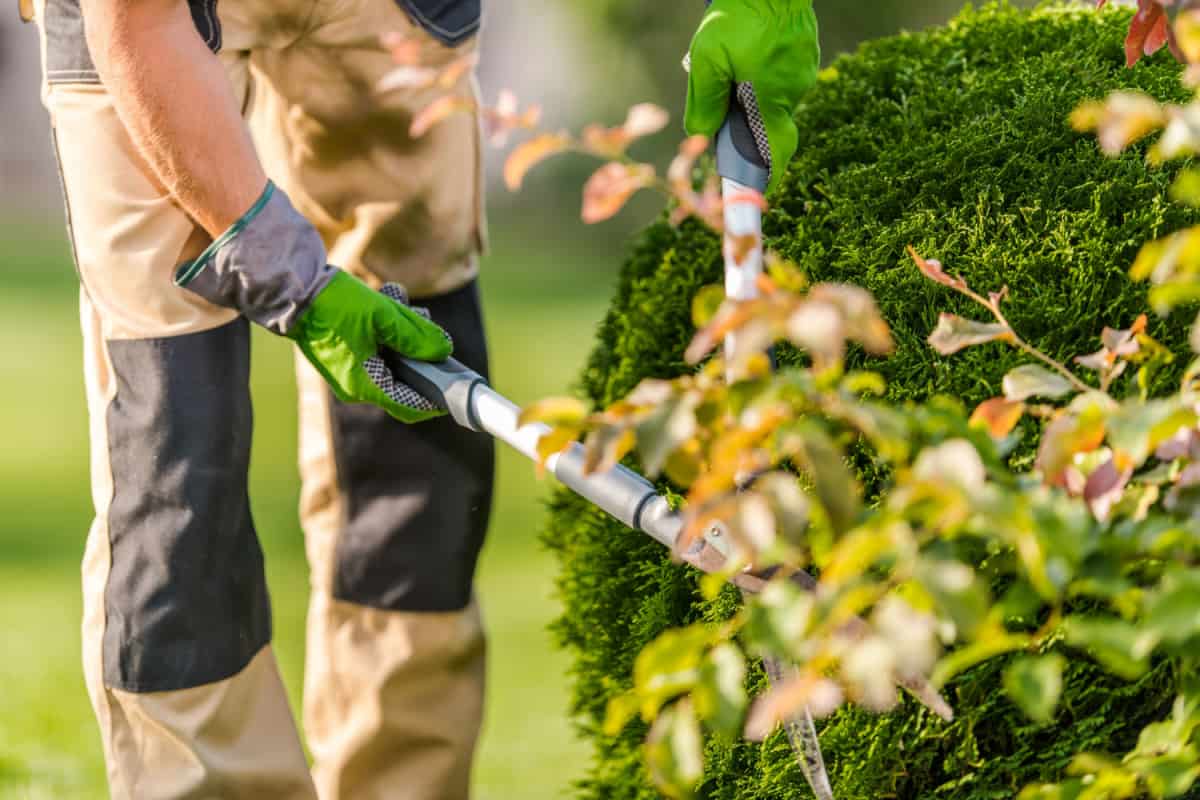
These plants are often adapted to grow in shady, less-than-ideal conditions, which means they require minimal upkeep.
With proper planting and occasional watering, your evergreen shrubs will withstand various weather conditions, pests, and diseases.
This low-maintenance aspect helps you save time, effort, and resources while still enjoying a beautiful garden.
Year-Round Interest
Unlike deciduous plants, which lose their leaves during fall and winter, evergreen shrubs maintain their foliage year-round.
This means your garden will have a constant source of color and structure, even during colder months.
Planting hardy evergreen shrubs in your shady garden ensures a lively and dynamic landscape throughout the year, helping to create an inviting and balanced environment for you to enjoy.
Top Hardy Evergreen Shrubs for Shady Gardens
Transform your shady garden into a beautiful oasis by incorporating hardy evergreen shrubs.
These plants can thrive in low-light conditions, providing you with lush, green foliage all year round.
In this section, we'll introduce you to five popular evergreen shrubs for shady gardens: boxwood, yew, Japanese holly, inkberry, and dwarf Siberian cypress.
Boxwood
Boxwood (Buxus spp.) is a versatile evergreen shrub that can easily adjust to different light levels, from full sun to partial shade.
![box plants have been individually clipped as oval ball shapes and allowed to grow together at the edges, boxwood edging, What To Plant In Front Of Boxwoods [7 Colorful Options To Consider]](https://gardentabs.com/wp-content/uploads/2022/08/box-plants-have-been-individually-clipped-as-oval-ball-shapes-and-allowed-to-grow-together-at-the-edges-boxwood-edging.jpg)
With its dense, compact growth and small, glossy leaves, boxwood is perfect for creating low hedges, topiaries, and lush borders in your garden.
Moreover, this hardy plant is available in various sizes and shapes, which allows you to find the ideal option to suit your garden aesthetics.
Prune boxwood regularly during the growing season to maintain its shape and promote healthy growth.
Yew
Yew (Taxus spp.) is a reliable evergreen shrub that can tolerate various levels of shade.

These low-maintenance plants feature dark green, needle-like foliage and red berries, offering both visual interest and wildlife appeal.
Yews can be easily shaped into hedges, screens, or specimen plants, thanks to their natural versatility.
For the best results, plant yew in well-drained soil and provide adequate moisture to ensure its healthy growth.
Japanese Holly
Japanese holly (Ilex crenata) adds an attractive touch to your shady garden with its small, glossy, dark green leaves.
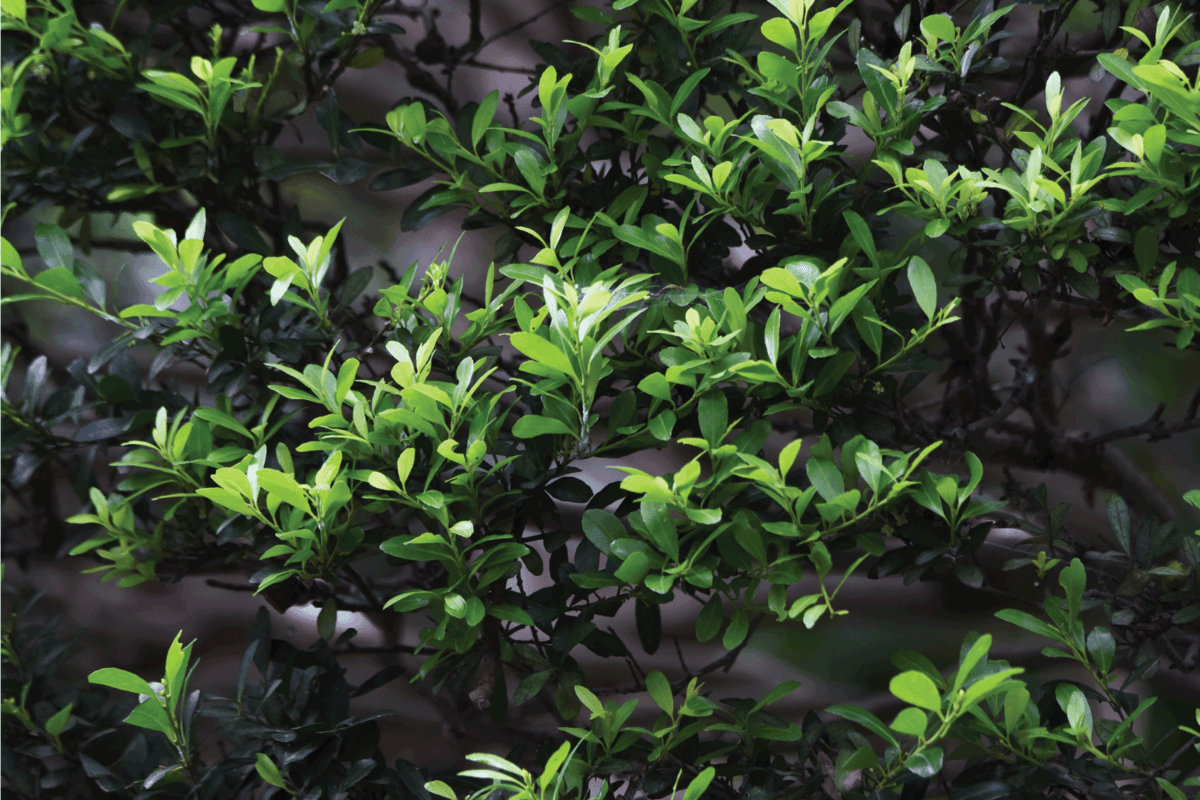
This easy-to-grow shrub can withstand cold temperatures and varying light conditions.
With its dense structure and mounded growth habit, Japanese holly serves as an ideal foundation plant, hedge, or border.
Furthermore, its small white flowers and black berries offer additional interest throughout the year.
Inkberry
Inkberry (Ilex glabra) is another evergreen shrub that thrives in shady gardens.
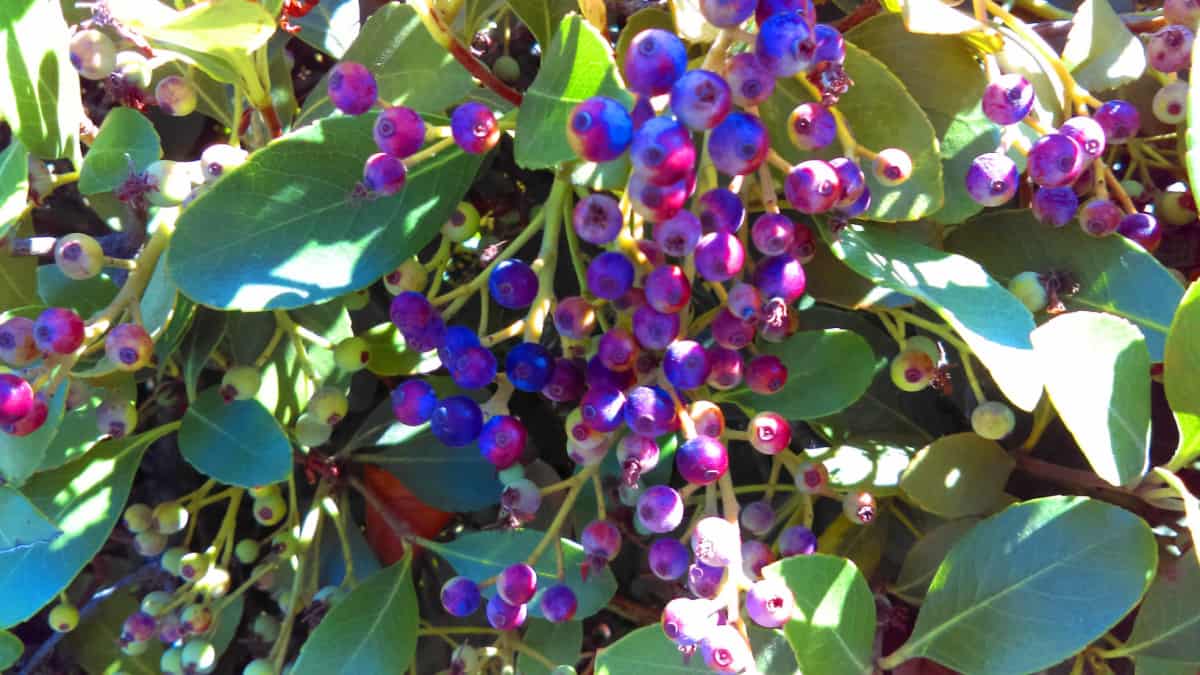
This native plant features dark green leaves and black berries, which create a stunning contrast against its dense, twiggy branches.
Inkberry is a suitable choice for mass plantings, hedges, or as an attractive backdrop for flowering plants.
To maintain its compact shape, prune inkberry every few years, especially if you notice the lower branches becoming leggy.
Dwarf Siberian Cypress
Dwarf Siberian cypress (Microbiota decussata) is a low-growing, groundcover evergreen shrub that can easily adapt to areas with less sunlight.
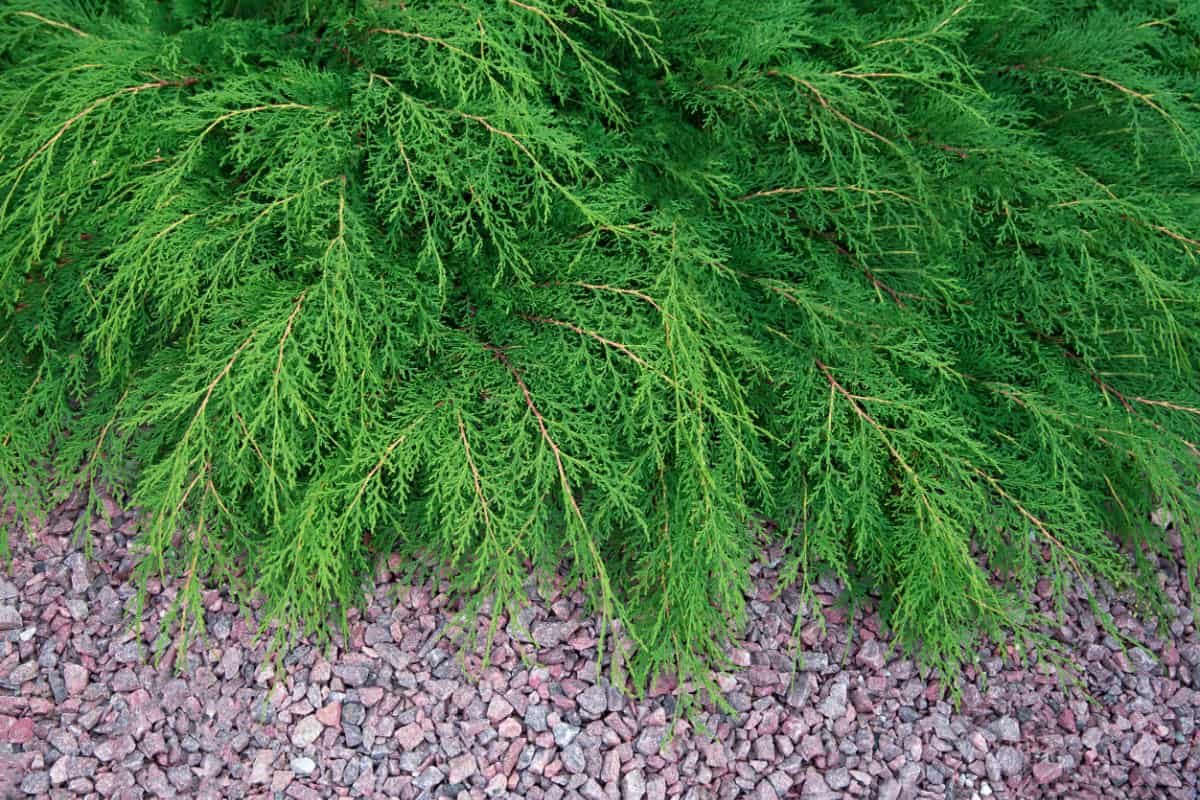
Its fern-like, soft green foliage turns an appealing bronze-green color in winter, providing visual interest throughout the year.
Dwarf Siberian cypress is an excellent option for stabilizing slopes and filling landscape gaps, as it can spread horizontally without taking up much vertical space.
Plant this hardy shrub in well-drained soil and make sure to provide adequate moisture during dry periods.
Plant Selection Tips
When choosing hardy evergreen shrubs for your shady garden, there are several factors to consider to ensure that you make the best choices for your unique landscape.
This guide will help you navigate the process by discussing growth habit, soil and light requirements, zones, and hardiness.
Growth Habit
Selecting plants with different growth habits can create a balanced and attractive garden design.
Pay attention to the mature height, spread, and overall shape of each shrub. Consider how your plant selections will fit within your garden's existing layout.
For example, choose low-growing groundcovers to cover bare soil, medium-height shrubs to fill in gaps, and taller shrubs for visual interest or to screen an unsightly view.
Soil and Light Requirements
Each plant has specific soil and light requirements.
When choosing species for your shady garden, look for plants that thrive in the particular conditions found in your landscape.
Some examples of shade-tolerant evergreens include glossy abelia and aucuba.
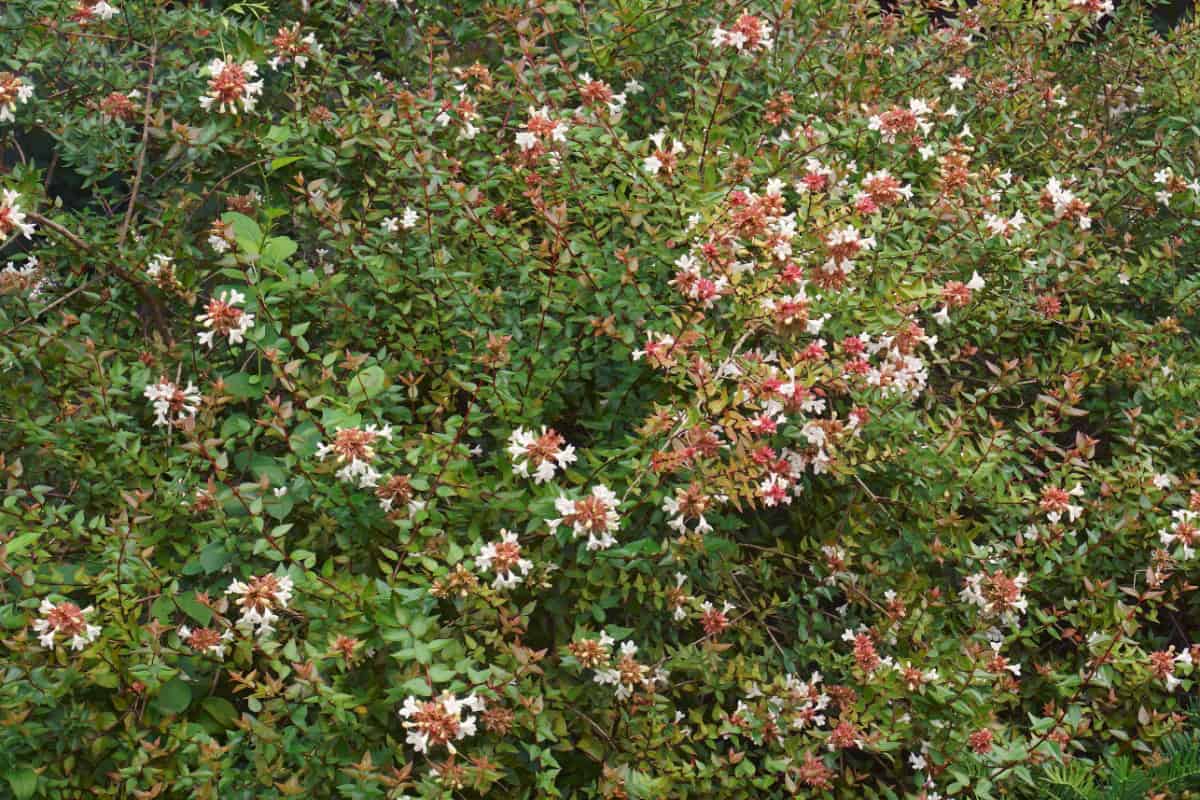
Understanding the type of shade your garden provides (full shade, partial shade, or dappled shade) is essential when selecting plants, as this can impact the overall health and growth of your shrubs.
In addition to light, pay attention to the soil type, pH, and drainage in your garden.
Choose plants that can tolerate your garden's specific soil conditions, whether it's sandy, clay, or loamy.
Ensure proper drainage to prevent root rot and other issues.
Zones and Hardiness
Finding appropriate plants for your hardiness zone is crucial, as it determines how well your shrubs can endure the winter temperatures in your area.
When selecting hardy evergreen shrubs, consider their USDA Hardiness Zone ratings.
This information can be found on plant labels or in nursery catalogs.
Make sure your selected species can withstand the lowest winter temperatures experienced in your location.
By considering these factors, you'll be able to select shrubs with confidence, creating a beautiful and thriving garden even in challenging shady conditions.
What is the Most Shade-Tolerant Evergreen?
Finding the perfect evergreen shrub for your shady garden can be challenging, but one great candidate is the Aucuba japonica, also known as Japanese aucuba.
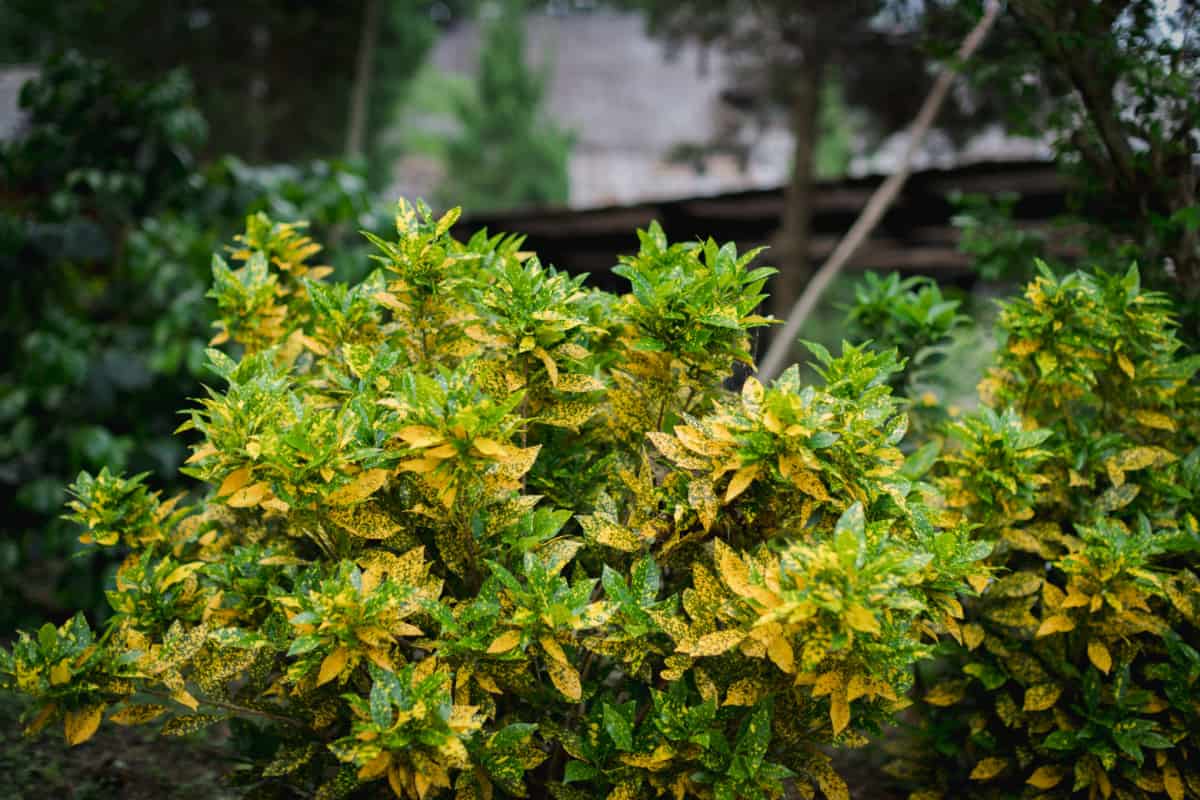
This shade-loving plant thrives even in the deepest of shady spots, making it an ideal choice for transforming your garden.
Japanese aucuba is a popular choice for its striking foliage, which comes in different shades of green, often variegated with yellow or white speckles.
This plant is not only visually appealing, but it's also relatively low-maintenance.
Once established, it requires little care apart from occasional pruning or shaping.
In terms of size, the Japanese aucuba typically grows to a height of 6-10 feet and spreads about 5-9 feet, making it suitable for planting as a focal point, a privacy screen, or even as a foundation plant.
While it prefers well-draining soil, this evergreen is also capable of adapting to various soil types, including clay and sandy soils.
A couple more options worth considering for your shady garden are the Yaupon (Ilex vomitoria) and sweet pepperbush (Clethra alnifolia).
These native shrubs are not only shade-tolerant but also deer-resistant, which can be a significant advantage if you live in an area where deer are common.
What is the Fastest-Growing Shrub for Shade?
One of the fastest-growing shrubs for shade is the red cedar (Juniperus virginiana).
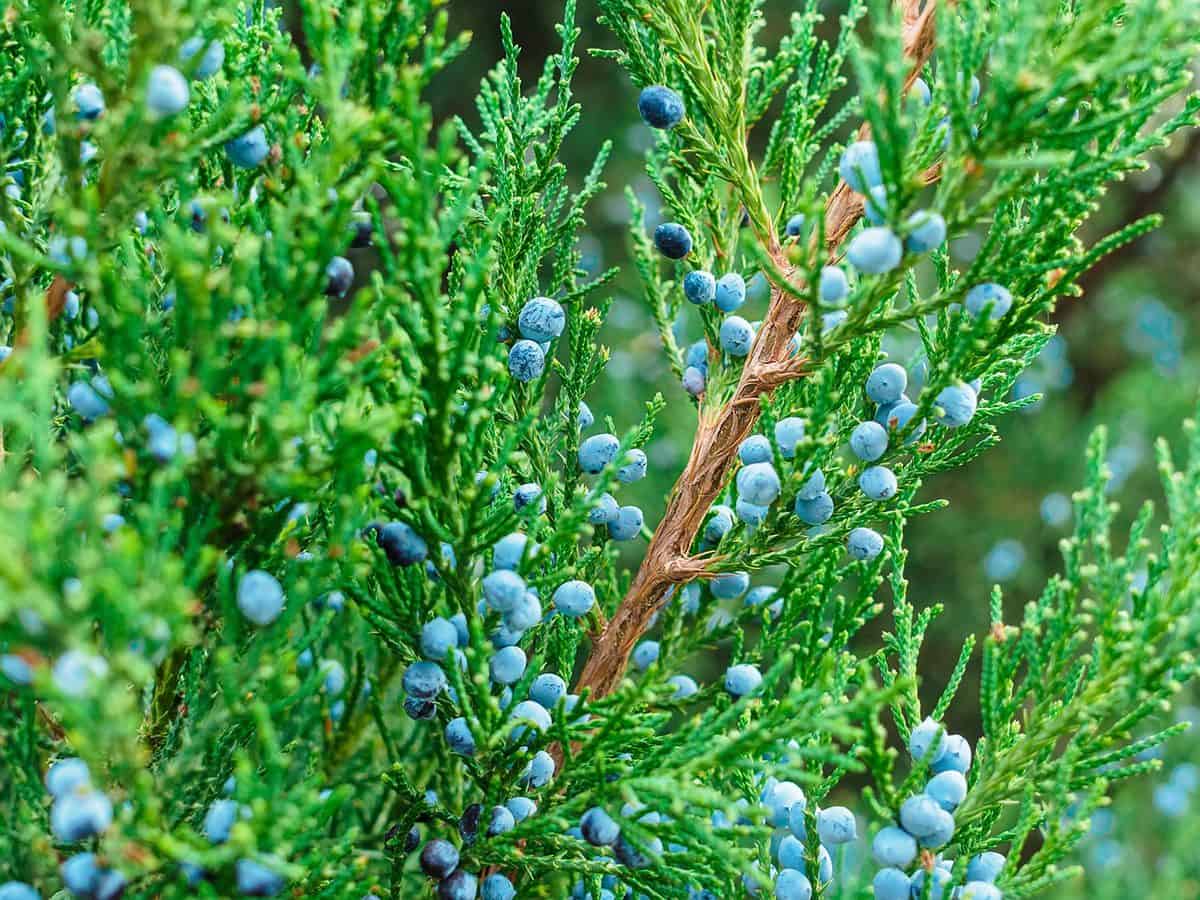
This native plant is not only evergreen but also deer-resistant, which makes it a great option for those looking for low-maintenance options.
It thrives in shade and can grow up to 2 feet per year, making it ideal for filling up those empty spots in your garden quickly.
Another option you can consider is the scarlet buckeye (Aesculus pavia).
Also known as red buckeye, this shrub boasts intriguing red flowers in spring, attracting hummingbirds and butterflies.
It also grows well in shade and can quickly establish itself in your garden.
Remember that, while fast-growing shrubs can fill your garden quickly, they may require more maintenance to keep them in check.
Regular pruning is essential, so they don't overgrow their designated area.
Which Hollies Do Best in Shade?
One option to consider is the yaupon holly (Ilex vomitoria). This native shrub is deer-resistant and can grow well in both sun and shade.

Its glossy green leaves and red berries make it an attractive addition to your garden.
The Savannah holly (Ilex x 'Savannah') is another great choice for shady areas.
This evergreen small tree can grow up to 30 feet tall and 8 feet wide.
It is adaptable to various light conditions, from full sun to partial shade. Plus, it produces an abundance of red berries, which can attract birds to your garden.
If you're looking for a cold-hardy holly, the meserve holly (Ilex meserveae) might be the perfect fit.
With a height of 6 to 7 feet, this evergreen shrub can provide excellent privacy in your shady garden while also tolerating colder climates.
Lastly, consider the dahoon holly (Ilex cassine), a native holly to Florida that can handle shady conditions.
This species is known for its smooth-edged leaves and stunning red berries, which can add some much-needed color to your shady garden.
Choosing the Right Combination of Evergreen Shrubs is the Key
In your quest to transform your shady garden, incorporating hardy evergreen shrubs is a fantastic choice.
These plants not only bring color and texture but also provide year-round interest and wildlife benefits.
Keep in mind that choosing the right shrubs will ensure a thriving and low-maintenance garden.
With the right combinations and care, your shady garden will no longer be a challenge but instead, a breathtaking attraction bursting with color and vitality.
For more readings on evergreen shrubs, check out these other articles:
19 Dwarf Evergreen Shrubs For Full Sun
The Secret to Beautiful Evergreens: When to Trim Evergreen Bushes in Your Region
